[disclose]
Norwegian is launching nonstop service to Rome from Newark, Los Angeles and Oakland this upcoming winter. With the new service, you can certainly expect US to Rome fares to be even more competitive. We really enjoy Rome as a city but we love the food the most.
Yvonne, of Hello Wander World, who previously wrote about Culebra Island, Puerto Rico, Iceland, Costa Rica and Bangkok, recently went to Rome and here are her practical travel tips.
If you would like to write about your recent travel experiences on The Flight Deal, submit your pitch here.
===
Rome, Italy, also known as the Eternal City, is consistently in the Top 3 most visited European cities and for good reason. The epic history of the Romans is well preserved and the food is fresh and colorful.
Rome is part of the EU, so they use the Euro. Credit cards are accepted mostly everywhere (even American Express in some places!) minus some cash-only shops.
How to get Into the city
Fiumicino Airport (FCO) is the main international airport for Rome. There are a couple of different ways to get into the city. The most convenient way is taking a taxi. It’s a flat rate of €48 for up to 4 people to the city center and takes about 40 minutes with normal traffic. The express train costs €15/person and takes 32 minutes to reach the Termini at the city center. There are also bus services with multiple stops that cost €6- €8 and could be a better choice for people not staying directly in the center.
If you’re coming into the city from another European city via train, you’ll most likely end up at Roma Termini and can transfer to the metro or walk to your destination from there.
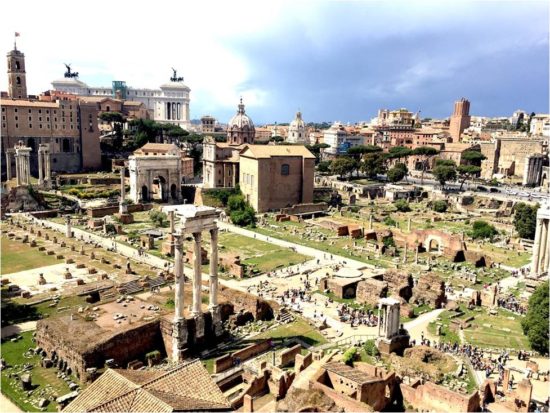
The Roman Forum – full of history and legendary views – Photo: (c) 2017 – Yvonne of Hello Wander World
How to get Around
Rome is a very walkable city, although the main sites can be deceivingly far from each other. For the sore feet, the metro is a great, straightforward option. There are two main lines, connecting at Roma Termini. A one-way trip will cost you €1.50, a 24-hour unlimited pass will cost you €7. There are also buses that connect the rest of the city – note that tickets must be purchased in the terminal before getting on the bus.
Driving is hectic and the traffic can get pretty bad, so I wouldn’t recommend this unless it’s necessary. Rideshares are also available, but the traffic can cause price surges often.
Where to Stay
There are great options for lodging all over the city and the main attractions can be kind of far from each other, so it really depends on what the focus of your trip is. If you want convenience of travel, stay near the Termini, the main hub of the train, metro, and bus connections. Most attractions will be within a 20-30 min walk or you can easily hop on the metro. If your main draw is Vatican City, you’ll want to stay on that side of town, as it’s a little far out from the city center. If you’re all about the nightlife and charming Italian streets, you’ll want to stay in the Trastevere area, where tourists and locals alike hang out and party until the wee hours of the morning.
There is a city tax for all tourists staying in hotels and BnBs (hostels are exempt). It ranges from €1 – €3/person per night depending on the grade of hotel.
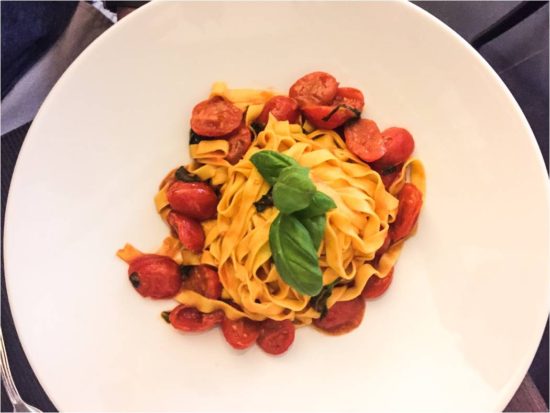
Fresh pasta made by us in a cooking class – Photo: (c) 2017 – Yvonne of Hello Wander World
Food and Dining Etiquette
Food is a serious love in Italy. It’s to be enjoyed slowly and without waste. Everyone knows the Italians are known for their pizza, pasta, wine, and gelato. It’s evident by the never-ending line-up of pizzerias and gelaterias. Wine is very affordable – you can find some bottles for as low as €3 in markets.
Italians eat late compared to Americans, with 1-2pm being lunchtime, 7-9pm being happy hour, and 9:30pm being dinnertime. This actually bodes well for Americans that eat earlier dinners, as most restaurants don’t become busy until later.
Restaurants can be expensive, so expect to spend at least €15/person for sit down meals. The good thing is there is no need to tip.
Once done with the meal, waiters will only give you the check if you ask for it. They’re in no hurry to get rid of you, so take your time to enjoy the meal.
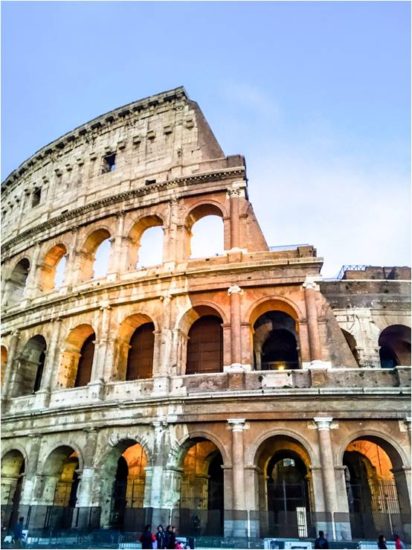
Outside of the Colosseum – Photo: (c) 2017 – Yvonne of Hello Wander World
Best Tours
Colosseum & Roman Forum:
The Colosseum and Roman Forum come bundled in one entry ticket. In the Colosseum, you can opt to add an audio guide or a tour guide. Regular entry is €12 and tours are additional.
A great extra experience to the colosseum is the Third Ring tour. This exclusive tour takes you to the lower and upper levels in addition to the middle levels for a normal ticket. You get to see and hear a little more about how the colosseum as a whole functioned. Tickets are limited and released in series of two month increments. The English tours usually sell out in a day – even less during high season, so check the schedule to see when the tours are released and stay alert.
Vatican Museum/Sistine Chapel/St. Peter’s Basilica:
The Vatican City sites have legendary long lines, so it’s very important to reserve your tickets beforehand to save yourself a couple of hours. To fully experience the Vatican, I recommend a tour guide or at least an audio guide. There are no reading materials, as you walk through in a steady stream of forward movement – there’s limited stopping allowed. The sites are closed on Sunday’s. Regular admission to the Museum and Sistine Chapel is €16. St. Peter’s Basilica is free to enter and €9 to reach the top of the dome. Tours for all 3 start around €56.
In order to visit the Sistine Chapel and St. Peter’s Basilica, it’s important to have clothing that covers your shoulder and knees. You will be turned away if you do not follow the appropriate dress code.
Pro-tip: Visit in the afternoon, as the lines are generally shorter and you can experience amazing light in St. Peter’s Basilica.
A very unique experience in the Vatican is seeing the Pope. The Pope makes an appearance almost every Wednesday, around 10 or 10:30am, when he is in Rome. Admission is free, but you do need a ticket – you can find those and the schedule on the Vatican website. The square is usually full by 8am, so arriving early for a good spot is a must.
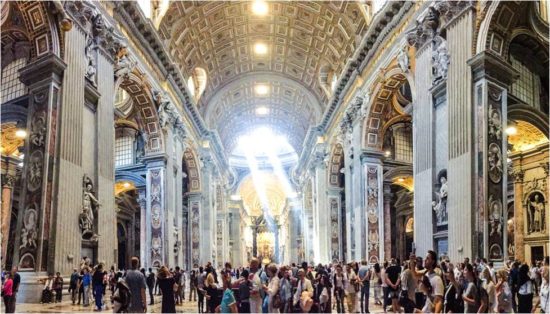
St. Peter’s Basilica drenched in afternoon light – Photo: (c) 2017 – Yvonne of Hello Wander World
City tours:
There are many options for tours of the city and bundled site tours. The options can be overwhelming, so have an idea of what you want to see, how you want to see it (Segway vs. bus vs. walking), and the amount for your budget. For the budget conscious, there are great free walking tours. Just Google it!
Other must-sees
Trevi Fountain: free; enjoyable both during the day and night when it’s lit up. Known as the place to make wishes to return to the Eternal City by throwing a penny over your left shoulder.
Pantheon: free; the best preserved structure from Ancient Rome, now a church. It can be a quick visit for about 20 minutes just to marvel at the extraordinary architecture.
Spanish Steps: free; a great place to relax and people watch
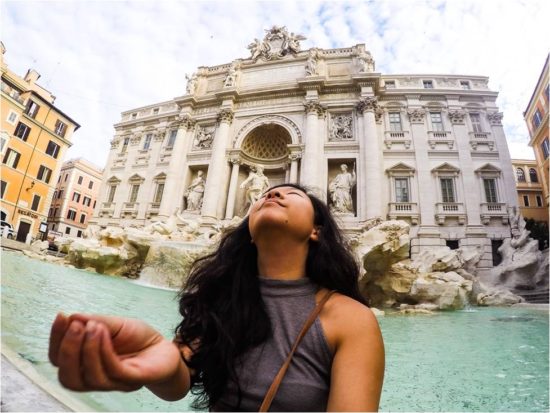
Making a wish at the Trevi Fountain (with no crowds at 7 in the morning!) – Photo: (c) 2017 – Yvonne of Hello Wander World
Travel hacks
- The city offers a discount card called Romapass, starting at €28. This pass grants you free access to one museum/archaeological site, discounted prices to events/exhibitions, and free public transport within either a 48 or 72 hour time span (depending on the level you purchase). You can purchase this pass online or in-person at museums or train ticket offices.
- Rome is a very crowded city. It’s still possible to see a peaceful, authentic Rome without a hundred strangers getting in your way, but it requires an early wake-up. Usually getting to your destination before 7:30am will unlock this more intimate experience.
- There are public water fountains all over the city. The water is drinkable, refreshing even.
- There is a VAT (value-added tax) refund in the airport. This tax is added to basically every good bought in the city. If you have single transaction purchase of over €155 at a store, you are eligible for this refund. Keep in mind the lines can get pretty long, so plan accordingly.
Language
You can easily navigate the city with English, but using a few basic words in Italian to greet people goes a long way.
Hello and also Good-bye: ciao
Thank you: grazie
You’re welcome: prego
Safety
The city is safe. The biggest worry is pickpockets, especially in large crowds. Keep your valuables close. Only carry things in your front pockets and inner pockets of bags. Stay conscious of where your valuables are.
Best time to Visit
The best time to visit Rome is during the shoulder seasons of April – early June and late September – October. You’ll experience fewer crowds and great weather. August is considered a bad month to visit as the weather is hot and muggy; moreover, most Italians take vacation during this time, thereby leaving many hotels and restaurants closed. And yet tourists still flock to the city – creating a crowded place with fewer options.
About The Author:
=====
To make sure you receive our latest deals, LIKE our The Flight Deal Facebook Page, follow us on Twitter @TheFlightDeal, Threads @TheFlightDeal or The Flight Deal WhatsApp channel or subscribe to The Flight Deal RSS Feed or Subscribe via Email (Once a Day)
The Flight Deal does not sell travel products or services. We provide you with information about third-party travel suppliers’ offers, and link you to their sites. The information posted by The Flight Deal is valid at the time of publication. However, we have no control over the suppliers, and we therefore do not warrant or guarantee that their offers will not change or become unavailable. Nor are we responsible for their products, services or site content. Please see their sites for their most up-to-date offer information and all applicable terms and conditions.
Sign up to receive The Flight Deal Daily DealsLetter, to stay up to date with the latest and greatest flight deals available.

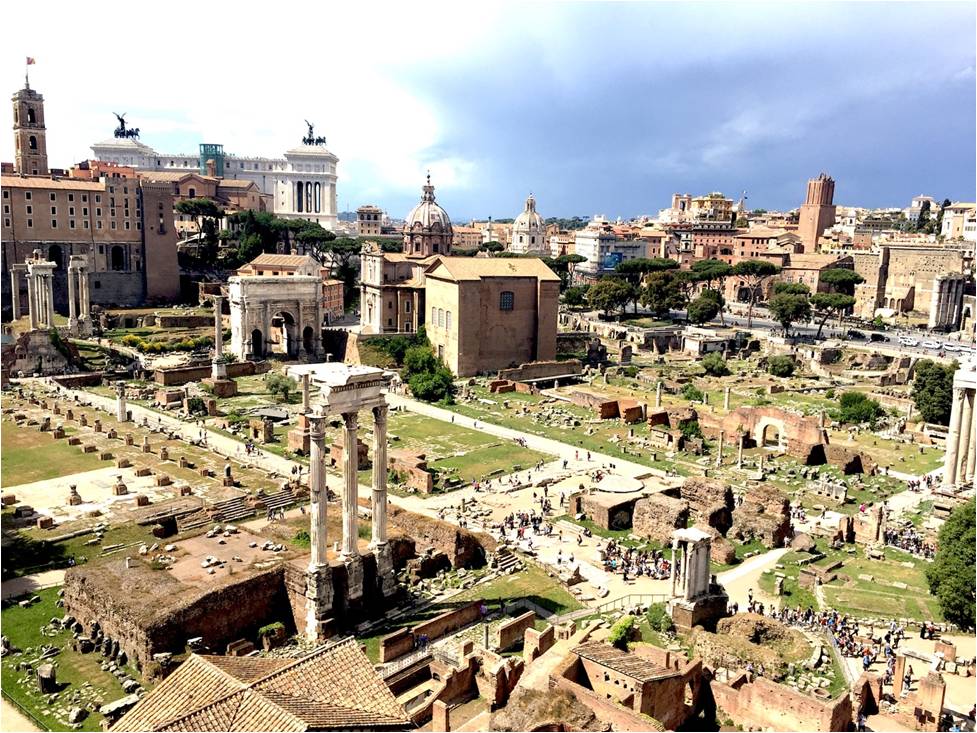
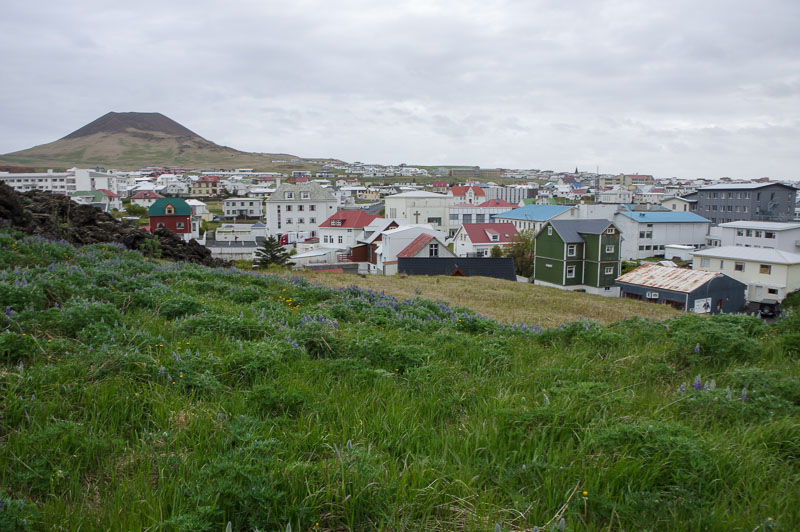
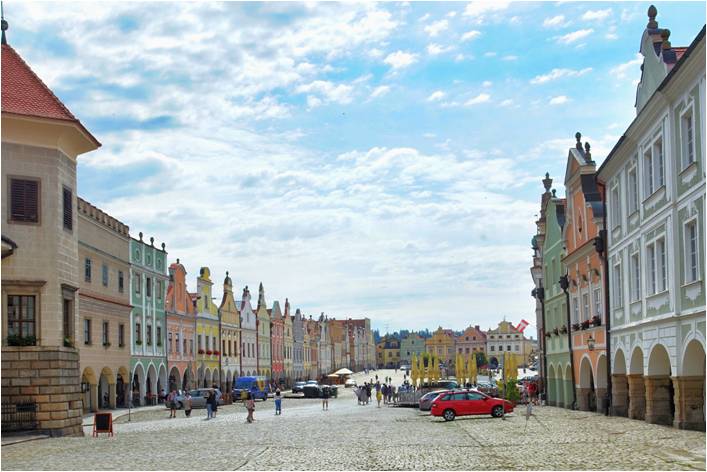
No Comments